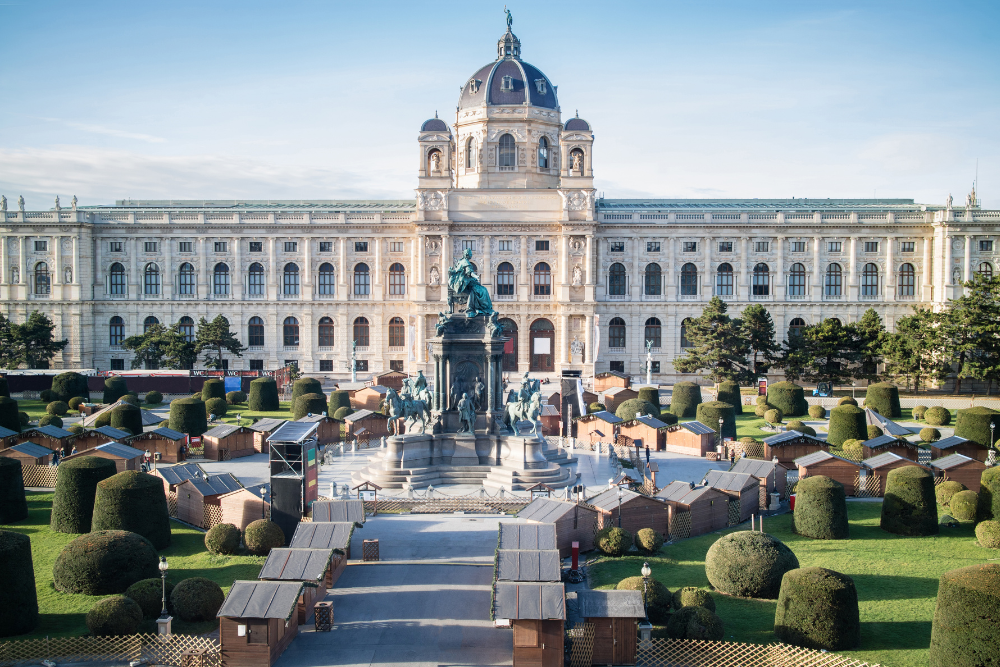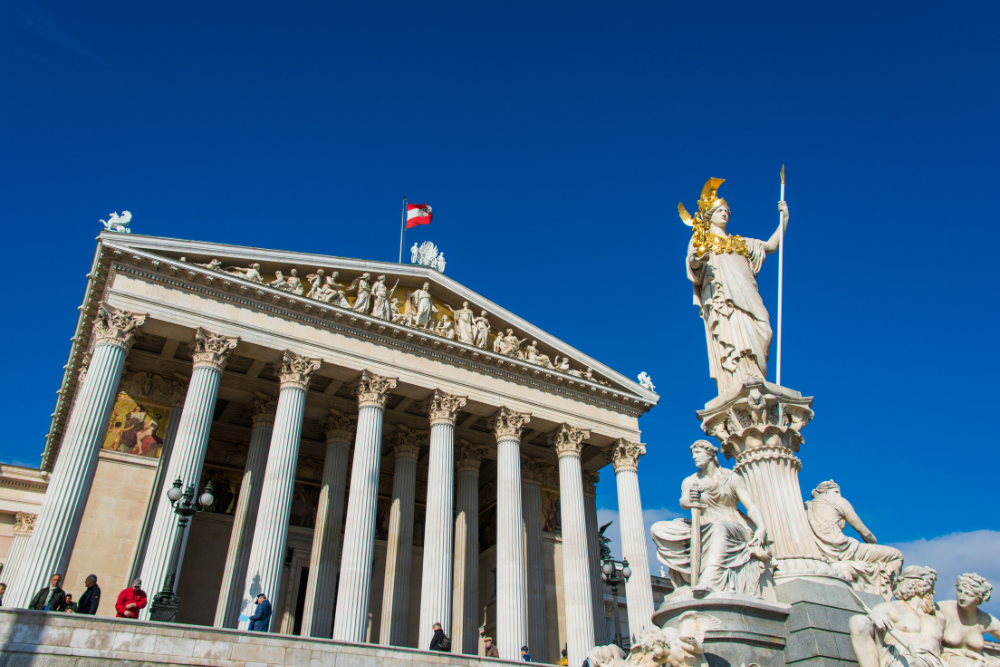Austria is a country steeped in rich history, from its Roman roots and medieval architecture to its influential role in European politics during the Austro-Hungarian Empire. For history buffs, exploring Austria’s past is a journey through time, with cities offering a wealth of museums, historic sites, and preserved landmarks that tell the stories of the people, events, and cultures that shaped this fascinating nation. Here are some of the top cities in Austria where history comes alive.
1. Vienna: The Imperial Heart of Austria

As the capital of Austria and the former seat of the Austro-Hungarian Empire, Vienna is an absolute must for anyone interested in European history. The city is a veritable museum of imperial grandeur, featuring opulent palaces, historic squares, and cultural landmarks that trace the country’s royal past.
- Hofburg Palace: The winter residence of the Habsburgs, this sprawling palace complex is home to several museums, including the Imperial Apartments, Sisi Museum, and the Spanish Riding School, where you can learn about the history of the imperial family and their extravagant lifestyle.
- Schönbrunn Palace: A UNESCO World Heritage site and one of the most important cultural monuments in Austria, Schönbrunn was the summer residence of the Habsburg rulers. You can tour the palace’s luxurious rooms, stroll through the beautiful gardens, and visit the Gloriette for stunning views of the city.
- Kunsthistorisches Museum: This museum showcases the incredible collection of art amassed by the Habsburgs, including works by Vermeer, Titian, and Rembrandt.
- Prater Park & Giant Ferris Wheel: An iconic symbol of Vienna, the Wiener Riesenrad Ferris wheel dates back to 1897 and has witnessed the city’s historical changes.
2. Salzburg: Birthplace of Mozart and Baroque Splendor

Famous for its stunning Baroque architecture, Salzburg is a city rich in history and culture. As the birthplace of composer Wolfgang Amadeus Mozart, the city has a strong connection to the arts, but it also offers a fascinating look at medieval and early modern history.
- Hohensalzburg Fortress: Dominating the skyline, this medieval fortress offers panoramic views of the city and the surrounding Alps. Inside, you can explore the castle’s history, from its beginnings as a bishop’s residence to its role as a military stronghold.
- Mozart’s Birthplace: A visit to the house where Mozart was born provides a glimpse into the life of one of the greatest composers in history. The museum displays personal artifacts and exhibits about his early years and musical legacy.
- Salzburg Cathedral: This magnificent Baroque cathedral, built in the 17th century, is one of the most iconic landmarks in Salzburg. It also holds significant historical importance as the site of the baptism of Mozart.
- Getreidegasse: Wander through this charming street, lined with medieval buildings and iconic wrought-iron shop signs. This area is a UNESCO World Heritage site and offers a glimpse of Salzburg’s history and its role as a trading center.
3. Innsbruck: A Blend of Medieval and Alpine History

Nestled in the heart of the Alps, Innsbruck offers an intriguing blend of medieval and imperial history, along with a rich tradition of mountain culture. As the capital of the Tyrol region, it has long been a hub of trade, culture, and politics.
- Hofkirche (Court Church): This stunning church houses the tomb of Emperor Maximilian I and is famous for its impressive collection of black marble sculptures known as the “Black Men”, which represent the rulers and heroes of the Holy Roman Empire.
- Innsbruck Old Town: The medieval core of Innsbruck is a charming mix of narrow streets, colorful houses, and historic landmarks like the Golden Roof, a late Gothic balcony that was used by Emperor Maximilian I.
- Ambras Castle: This Renaissance castle is home to the Ambras Collections, including an impressive array of armor, weaponry, and paintings. The castle was once the residence of Archduke Ferdinand II, who transformed it into a cultural center.
- Swarovski Crystal Worlds: While not focused on ancient history, this contemporary art museum and garden explores the cultural significance of crystals in Austrian art and design.
4. Graz: A Blend of Medieval and Modern

Graz, the capital of Styria, is known for its well-preserved medieval center, rich history, and unique combination of old and new architecture. The city offers a fascinating glimpse into both medieval Austria and its more recent modern developments.
- Graz Old Town: A UNESCO World Heritage site, the historic center of Graz is filled with well-preserved buildings from the Middle Ages through the Baroque period. The Schlossberg hill, with its iconic clock tower, offers a beautiful view of the city and its history.
- Eggenberg Palace: This Baroque palace, surrounded by beautiful gardens, is a perfect example of 17th-century aristocratic life. The palace is now a museum with exhibits on the history of the region.
- Landeszeughaus: The world’s largest collection of medieval armor, housed in a Renaissance building, this museum showcases Graz’s role in defending Austria during the medieval and early modern periods.
- Kunsthaus Graz: For a more contemporary experience, visit the Kunsthaus (Art House), an ultramodern museum dedicated to contemporary art that contrasts with the city’s medieval and Baroque heritage.
5. Linz: A City of Innovation and Industrial History

As Austria’s third-largest city, Linz may not have the imperial history of Vienna or Salzburg, but it offers a fascinating story of industrial and modern history. Once a center of heavy industry, Linz has transformed itself into a hub of contemporary art and culture.
- Lentos Art Museum: This museum offers a glimpse into the city’s modern history, showcasing 20th- and 21st-century art in a striking contemporary building along the Danube River.
- Ars Electronica Center: A museum and research center dedicated to electronic arts, digital technology, and innovation. Linz has been recognized for its role in digital culture and arts, and this museum highlights the city’s transition from industrial center to a hub for digital creativity.
- Pöstlingberg: The hill is home to a pilgrimage church and offers a great view of the city. The surrounding area also tells the story of Linz’s development over the years.
Conclusion

Austria is a treasure trove of history, offering a wide variety of cities where you can dive into its past. Whether you’re exploring the imperial grandeur of Vienna, the artistic legacy of Salzburg, the medieval charm of Innsbruck, or the industrial transformation of Linz, each city offers a unique perspective on Austria’s rich cultural heritage. For history buffs, Austria is a country that provides endless opportunities to explore, learn, and be inspired by its fascinating past.












